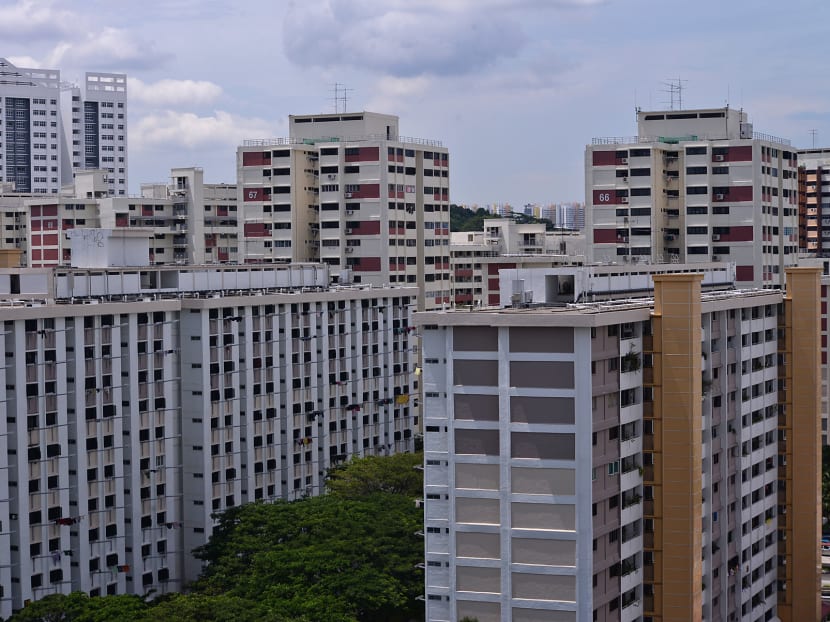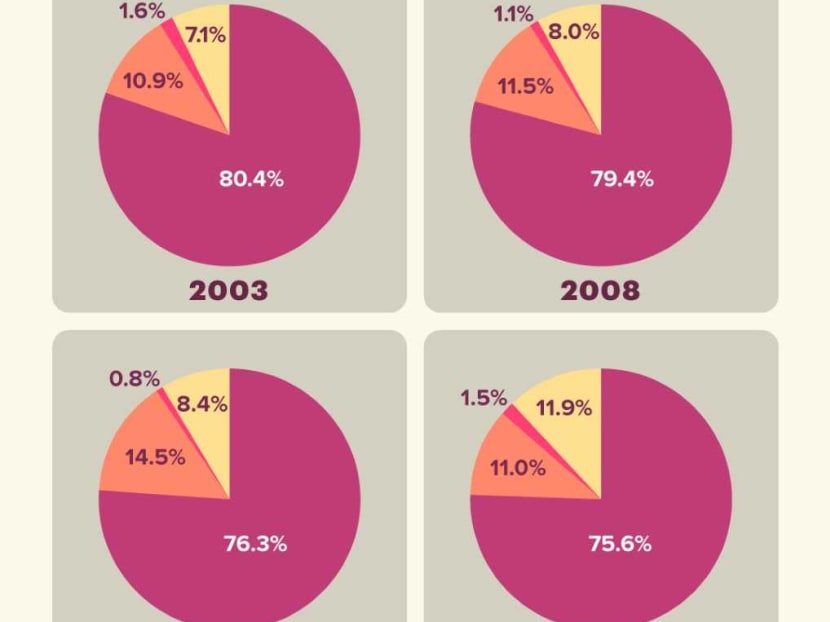Sharp rise in single-person households, accounting for 1 in 8 HDB homes in 2018: Survey
SINGAPORE — Single-person households living in Housing and Development Board (HDB) flats are becoming far more common as a result of Singapore’s ageing population and a rule change in 2013 that allowed singles aged 35 and above to buy new two-room flats.

A new survey by the Housing and Development Board (HDB) indicates that there is a rapidly rising proportion of households living in HDB flats that has one occupant.
- In 2003, only 7.1 per cent of HDB households comprised one person
- By 2013, the figure had grown to 8.4 per cent, but it shot up to 11.9 per cent in 2018
- Factors: Ageing population and a rule change allowing singles to buy new two-room flats
- This trend also corresponded with a drop in marriage rate and a rise in divorce rates, analysts said
- There are more non-family-based households as well, making up 13.4 per cent of flats in 2018
SINGAPORE — Single-person households living in Housing and Development Board (HDB) flats are becoming far more common as a result of Singapore’s ageing population and a rule change in 2013 that allowed singles aged 35 and above to buy new two-room flats.
This group — which could include live-alone seniors, singles, widows and divorcees — made up about one in eight HDB households, or 11.9 per cent, in 2018.
In 2003, it was about one in 14 households, or 7.1 per cent.
The pace of increase of one-person households has risen sharply since 2013 when the figure was 8.4 per cent. That means that 73 per cent of the growth in solo HDB households in the 2003 to 2018 period occurred in the most recent five years since the rule change.
This was one of the key findings of HDB's latest sample household survey results, which were released on Wednesday (Feb 10). A second tranche of the findings will be released on Sunday.

Infographic: Anam Musta'ein/TODAY
In response to TODAY’s request for an age breakdown of residents living alone in 2018, HDB said that individuals aged between 35 and 64 made up 51.2 per cent, while those aged 65 and above made up 47.5 per cent.
HDB also identified other changes to the profile of its residents.
Smaller household sizes: On average, household sizes have shrunk from 3.4 persons in 2008 to 3.1 persons a decade later. This is due to a decline in the proportion of households with two or more generations living together.
More non-family-based households: 86.6 per cent of households were family-based in 2018, down from 91.3 per cent in 2003. Households that are not based on family include those living alone and those living with unrelated or distantly related people
Fewer HDB flat dwellers: 3.04 million citizens and permanent residents lived in HDB flats in 2018, down by 20,000 from 3.06 million in 2013. HDB attributed this to an increase in the number of people moving to private housing
Ballooning cohort of elders: The number of residents who are aged 65 and above living in HDB flats crossed the half-million mark in 2018, representing 16.5 per cent of HDB dwellers, up significantly from 9.8 per cent in 2008
WHY IT MATTERS
HDB conducts this survey every five years to gather feedback about public housing and identify the changing needs and expectations of its residents.
The findings serve as “important feedback for policy reviews” and help HDB identify areas for improvements, thereby allowing the authority to keep pace with the evolving needs and lifestyle patterns of residents across different demographic profiles, it said.
This latest survey was the 11th one done since 1968 and was carried out between January and September 2018 involving about 7,800 households, just as the number of HDB households here surpassed one million.
One other finding that emerged was that a greater proportion of HDB households had moved at least once since the occupants' marriage than before – 80 per cent did in 2018, up from 72.6 per cent in 2013.
HDB said that its move to ramp up flat supply between 2013 and 2018 contributed to the increase.
It also said that families with children generally tended to move more than those without children due to the changes in household size. About eight in 10 families with children had moved at least once, compared with only half of those without children.
WHAT ANALYSTS SAY
The rise of single-person households corresponded with a drop in marriage rate and a rise in divorce rates in Singapore, analysts told TODAY.
This could result in more individuals seeking help directly from the Government instead of turning to their families as the first port of call when they face financial difficulties in the future, they pointed out.
Mr Nicholas Mak, head of research and consultancy at ERA Realty, said that the trend is not unique to Singapore and had been the case in a few of the more advanced economies, including Asian economies such as South Korea and Taiwan.
Younger people had been observed to delay starting a family while they prioritise tertiary education and their careers, he added.
Associate Professor Eugene Tan from the Singapore Management University, who conducts research in law, society and public policy, said that greater affluence and a desire for more privacy among singles contributed to the trend as well.
“The driving force is probably because singlehood is a more acceptable status and it remains relatively significant in our society,” he added, referring to figures from the Department of Statistics, which showed that more than 20 per cent of citizens aged 35 to 39 remained single as of last June.
On its implications, Assoc Prof Tan said: “Our social, housing and other policies are based on the family as the basic unit of society… The state will have to step in if more singles are compelled to seek help (primarily, financial help) beyond their families.”
Sociologist Tan Ern Ser from the National University of Singapore said what would be a matter of concern is if those living alone are cut off from society.
“If living alone equals being socially isolated, it would mean that we have a segment of society for which community care and support and resources would likely be necessary,” he said.
“As to whether anything good would come out of this trend, my view is that if living alone means less family conflict and more ‘intimacy at a distance’ and the formation of social networks in the community, then this can be a positive trend.”
Mr Lee Sze Teck, head of research at property agency Huttons Asia, said that HDB will need to keep abreast of this demographic change and renew its housing provision accordingly, pointing out that the number of singles had jumped by almost 300,000 from 2000 to 2019.
This has resulted in the number of one-person households almost tripling, from 75,400 in 2000 to 208,000 in 2019, he added.
On the finding that fewer citizens and permanent residents are living in HDB flats, Mr Lee said that it is reflective of rising income and affluence. Median monthly household income has more than doubled from S$4,398 in 2000 to S$9,198 last year, he noted.
“Coupled with a desire to change their lifestyle, some families and singles have opted to move to a private condominium. This has supported the healthy demand in the private residential market.”
Mr Mak from ERA Realty said that the number of private homes had grown to meet the higher demand for such housing.
The total private housing stock was 258,243 units in 2010, but it grew to 376,040 units a decade later, he noted.








